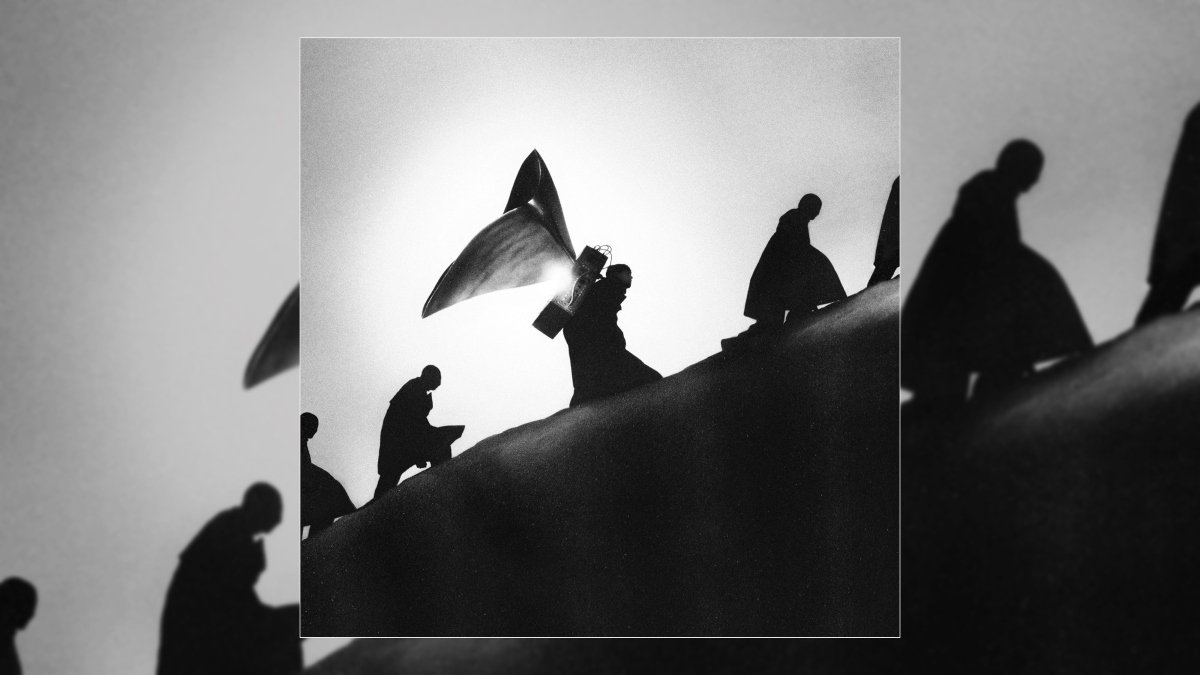James Blake
Playing Robots Into Heaven
Republic/Polydor
Listen Below
James Blake seems to rotate on an axis with opposing poles. At one end, he’s an electronic DJ spinning visceral, glowstick-illuminating experiences out of found art. The other finds him often exposing melancholic introspections on acoustic piano with his penetrating, pale spectre of a voice. The excitement of his artistry is wondering which hemisphere of his globe he will migrate to.
His first two LPs James Blake (2011) and Overgrown (2013) relied on a stylized tapestry of glitched, fuzzy textures that imprint patterns on the ears with tunes like “The Wilhelm Stream” and “Retrograde,” respectively. His follow-up The Colour In Anything (2016) split the difference fairly evenly. Blake was my go-to for exorcizing regret, longing, abandonment, and all permutations of malcontentedness. And then he had to go and fall in love.
His partner, actress Jameela Jamil, thawed the ice from 2019’s Assume Form with her optimism, and even creative input, co-producing five of the tracks with Blake. It’s akin to Mary J. Blige fans getting addicted to sackcloth-and-ashes R&B, then responding to her spiritual upturn with “we liked you better depressed.” For the record, Blake and Blige deserve happiness. If that were truly so repugnant, Friends That Break Your Heart (2021) returned him to the expected disconsolate troubadour territory as he recorded it at home in pandemic-borne isolation.
Now everyone’s back outside, and his latest chapter, Playing Robots Into Heaven, reminds us Blake is an electro-savant who can entrance an audience with or without a sung lyric. In returning to his clubby roots, he has somehow fashioned the most cohesive, integrated showcase of his diverse modes to date. His singing—alternately a boyish, breaking falsetto or cutting baritone—is a cast of characters on its own. The battery of effects employed on it take it to hyperrealistic places, but not on the project’s lead single.
“Big Hammer” launched sans even a wispy hum or howl from Blake, but it’s an excellent introduction, heralding a resurgence of body-moving electronica. This vibey grab bag of filter-blurred organ bleeps, gloriously manic energy, and trap-dancehall fusion (featuring The Ragga Twins via sample) is able to seize your mood, accelerate, and fling it into a wormhole.
Not long before the full release, a second single was unsheathed for preview. Even with its melted wax vocals, “Loading” may be as normal as it gets—and that’s excellent news. Blake can thrive in lovelorn environments, but as with “Big Hammer,” his navel-gazing soon bursts into a 132 BPM progressive house firework.
Listen to the Album and Watch the Official Videos:
Musically, James Blake shapeshifts like a less nomadic David Bowie or Björk. He handles the creative work without featured guests as on previous discs. Production, however, circles in assistance from former collaborators Rob McAndrews, Dominic Maker of Mount Kimbie, British Indian producer Khushi, and the multitalented Jamil. The final product is a masterpiece of chaos cordoned into neat 4x4 measures. Playing Robots Into Heaven is as organic as it is alien. What the 6’5” English musician has created is a mechanical crossbreed, like AI that finally gained sentience and now accurately approximates human emotion.
One might swear a machine language is being spoken by the buzzing alarms that laser through “Tell Me.” Cryptography translates to melody on this smashing track, a breakneck rave unto itself. Here and elsewhere, Blake proudly displays his mastery of disruption, which dance music absolutely requires. It is most apparent with the crunchy, gospel deconstruction in “He’s Been Wonderful.” Harmony and dissonance mix like heavily sugared creamer billowing into bitter black coffee, chased with a Red Bull. It’s all a delightful overstimulation.
In the two decades since 2-step UK garage’s peak, my affection for the subgenre got trampled down like high-traffic carpet. It fluffs right back up on “Fall Back” and “I Want You to Know,” a pair of standouts done in concert with Yaw Evans. The velocitous swing of these rhythms fit Blake snugly. Its modernized clicks and swipes ping back and forth like a tennis match (and might very well have been sampled from one). The tracks are decorated liberally with reverberant synths and mandolin-sliced vocals. If the latter rings familiar, you’re likely recognizing a displaced riff Blake resung from Snoop Dogg and Pharrell Williams’ “Beautiful.”
Without abandoning its danciness, the vespertine second half of the album awakes Blake’s more introspective tendencies. “Fire the Editor” takes aim at self-doubt and perfectionism, which could be missed if one fails to contextualize its mournful refrain (“I’m not afraid / I’ve already failed so many times”). Despite being a remnant intended for the 2019 sci-fi thriller Ad Astra, “If You Can Hear Me” reads as autobiographical under Blake’s devastatingly earnest delivery.
Playing Robots Into Heaven is like a surround sound work meant to be experienced in a theater where the seats rumble to punctuate its big moments. These songs are to be felt, not only heard. They should course through a strobe-lit warehouse while one writhes in rhythm, pressed sweatily against a throng of other nightlife denizens. Absent that ideal presentation, it may take multiple listens for its most powerful effects to register. Approach it like an edible gummy you think isn’t doing anything…until it kicks in. And when it does, you’ll know.
Notable Tracks: “Big Hammer” | “Fall Back” | “Fire the Editor” | “Tell Me”
LISTEN:


